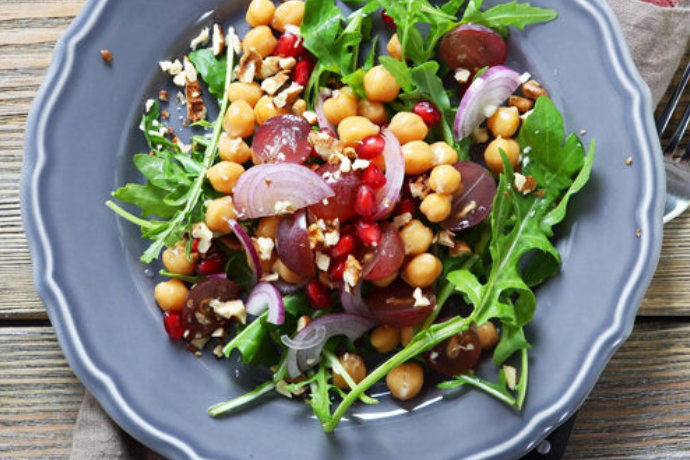The International Food Information Council (IFIC) Foundation’s 2019 Food and Health Survey showed that nearly two out of five (38 percent) Americans followed some sort of diet in the past year. While low-carb, keto and paleo are some of the more trending diets, there are others in their infancy, with the potential to go mainstream at any time. One of those is the Blue Zone, a lifestyle that mimics those of people who live in the five blue zone regions of the world.
The populations in these regions have been shown to live healthier and longer lives, with diet being a major contributing factor. They eat mostly plants indigenous to the region, with an emphasis on eating less meat, dairy and eggs. In fact, Blue Zone guidelines suggest no more than 2 oz. of meat about five times per month.
“These regions are not eating meat because it’s not prevalent or readily available,” said Kiki Kalabogias, who together with her husband George recently opened Blue Food Company in Chicago. This casual neighborhood restaurant offers a range of plant-based dishes, with protein an optional add on. Choices are chicken, herbed pulled pork, pork souvlaki, savory tofu and herbed lemon salmon.
“Meat is added more for flavor or seasoning,” she said.
The Kalabogias family comes from Ikaria, Greece, one of the five blue zones. The others are Loma Linda, California; Nicoya, Costa Rica; Okinawa, Japan; and Sardenia, Italy.
Blue Food Company serves a diverse menu with authentic tastes using imported ingredients from all of the zones. For true carnivores, there’s also a chicken sandwich, pork tamales and a soufiko bowl (Greek ratatouille) featuring roasted vegetables, rice, souvlaki kababs, tzatziki and pita.
The Blue Zone diet is a medley of cuisines. While meat and poultry are not abundant in the diet, when included in a dish, the protein is highly flavored and used as a delivery vehicle for herbs, spices and umami.

